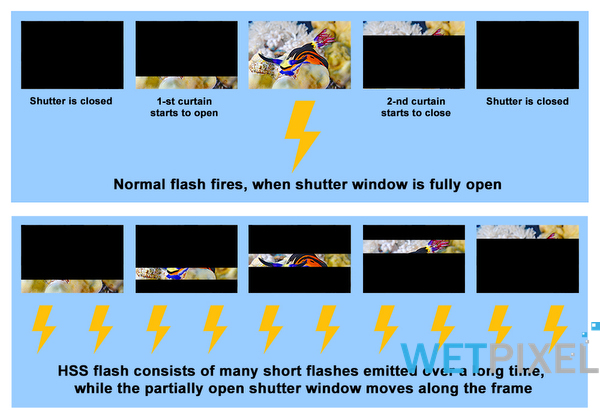Fundamentals of TTL Strobe Control by Pavel Kolpakov
How does high-speed sync (HSS) work with underwater strobes?
The diagram below shows the difference between high-speed sync (HSS) and conventional X-sync of an underwater strobe:

High-speed sync (HSS) allows flash at ultra-short shutter speeds in the range of 1/250… .1 / 8000 sec. The camera shutter never opens fully at such fast shutter speeds but is a narrow slit between the two curtains moving upward along the window. For uniform illumination of the frame with such a shutter operation, the flash should be a long sequence of short flashes with a repetition rate of about 30 kilohertz, firing all the time while the open shutter slit moves along the window. The total burn time of these flashes is about five times longer than that of a mono-flash, while its intensity is noticeably lower. It is customary to regulate the power of the HSS flash by changing the frequency of these pulses.
Underwater photographers have got a flexible HSS exposure tool. It is convenient to use it, for example, for shooting near the surface of the water, shooting in bright sunlight, creative photography with different depth of field, in backlight against the sun, shooting fast-moving objects, and several other applications. As a result, there is an increased interest in the underwater photography community for HSS-enabled underwater strobes.

- Underwater Flash Exposure Fundamentals
- TTL Development History
- Digital TTL Primer
- High Speed Synchronization